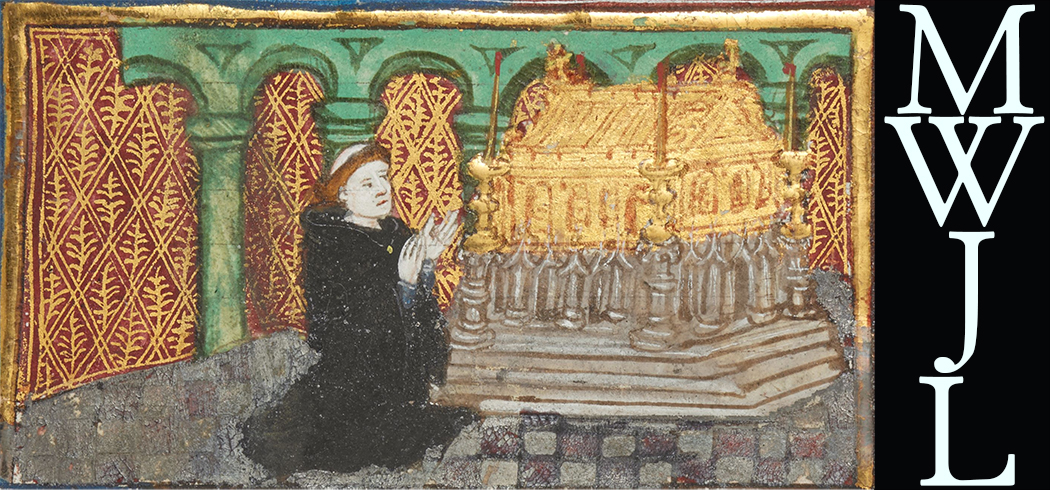 A Mumming at Windsor:
British Library Additional 29729 Verses
A Mumming at Windsor:
British Library Additional 29729 Verses
HomeAbout the ArchiveAbout John LydgateWorksManuscriptsAbout this ManuscriptEditorial ApparatusContactVisualization
Folio 145 Recto
Compare Witnesses: •
¶
hir holynesse / ffraunce did enlumyne •and crystes fayth / gretly magnefye •
loo what grace / doth in wymen shyne •
was assuraunce / no man may denye •
to saye pleyne truthe / nys no flaterye •
but stabulnesse / in wymen for to fynde •
demeth youre sellfe / wher it kometh them of kynde •
¶
ffor thorougħ mekenesse / yf it be aduerted •of saynte clote / and thorough hir hygh prudence •
kynge cloudoue / was to oure feyth conuerted •
in her ther was / so entier diligence •
ffullye deuoyde / of slouth and necligence •
no stynt noughte / till that hir lord hath take •
the fayth of cryst / and his errour forsake •
ffor he was bothe / manly and righte wys •
the thre crepandes / this noble kynge for soke •
and in his sheld / he bare thre floure delys •
sent from heuen / a tresore of great prys •
after at raynes / the story telleth thus •
Notes
-
Trinity R.3.20 puts this and "soke," below, in the present rather than past tense. ↩
-
The tittle is missing from the initial "i" glyph in this word, but the scribal practice is inconsistent throughout so it still reads "mi" rather than "nn." ↩
-
It appears that the scribe originally took the initial "k" of this word to be an "h," then corrected themselves by writing over the existing glyph. ↩
-
The terminal "y" here breaks the rhyme scheme of the stanza. This terminal y glyph also appears in the first stanza of the following page as well (breaking the rhyme scheme there as well) as in , although there the rhyme scheme is kept. This suggests a terminal glyph in the exemplar that the scribe is consistently misinterpreting. ↩





